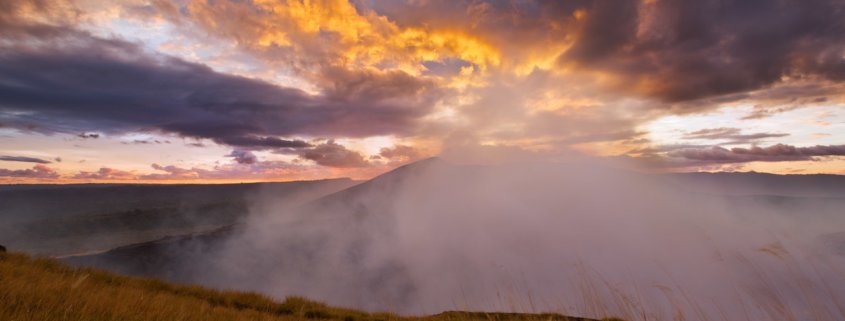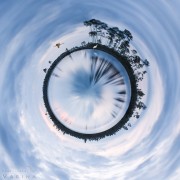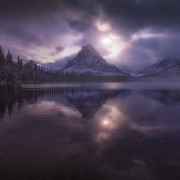Essential Photoshop Skills for Beginner Landscape Photographers
Our goal as landscape photographers should be to always try and get the best possible image in-camera… the exposure, composition, sharpness, and lighting. Trying to fix a bad landscape photo is frustrating and usually does not end well. Capturing a great photograph straight out of the camera is a good habit to have. But post-processing can then take these photos to the next level. I tell my workshop clients that Photoshop (or any other editing tool) should not be a crutch, but fine-tuned photo editing is a basic necessity in digital photography.
Photoshop is a fairly complex post-processing program with very advanced capabilities. It’s no wonder it intimidates so many beginner landscape photographers. One of the best ways to start mastering Photoshop for landscape photography is to focus on the essential tools while ignoring the advanced post-processing features.
The following are some of my favorite Photoshop adjustments and skills that I think every beginner landscape photographer should master.
How to read Histogram in Photography
The histogram in photography is important both while taking the landscape photo as well as in editing. It is a graph that shows the tonal range of your landscape photo. Histograms help you apply just the correct amount of post-processing so that you are able to see incredible amounts of details in the brightest highlights and the darkest shadows.
One thing to note is that there is no such thing as the perfect histogram in landscape photography since different subjects produce different results. A histogram of a landscape photo with a silhouette of a tree or a rock may have clipped shadows with no details. On the other hand, a landscape photo with the sun may include blown highlights and a spike on the right side of the histogram.
Cropping and Leveling in Photoshop
Cropping and leveling is an essential step in a landscape photography workflow. If for some reason I did not get a level horizon in camera, I can easily fix this with the Photoshop cropping and leveling tools. There is nothing worse in a landscape photo than post-processing an image and posting it on social media and then have a fan notice that the horizon is not level.
Image Resizing for Landscape Photos
Image resizing is used by every landscape photographer to publish their photos on social media or to turn them into a fine art print. The Image Resizing panel in Photoshop allows you to change the size of the image as well as its resolution. It also allows the landscape photographer to choose the algorithm used to resize the images. I use Resizing Adjustment in Photoshop for all my landscape photos; this was one of the first adjustments in Photoshop that I mastered.
Color Correction for Landscape Photography
Colors in landscape photography play an important role in conveying the mood and feelings to your viewers. There are a number of factors that impact the colors in landscape photography. There are also times when the colors in your camera may not match what you see with your own eyes.
Photoshop gives you a variety of tools to make highly selective color adjustments to your landscape photos. Here are three color correction tools that every beginner landscape photographer should master:
White Balance Setting in Adobe Camera RAW
If you are shooting in RAW format with the auto white balance setting, the landscape photos straight out of your camera may have different colors then those that were present at the scene. You can utilize white balance correction within the Photoshop Camera RAW module to create the look you want – from a warm tone to a cool tone photograph.
Saturation and Hue Correction
Hue and saturation adjustments in Photoshop can really take your landscape photos from good to bad. So it is best to use this tool with small adjustments. The Hue and Saturation adjustment panel allows you to work on different colors independently of each other. You can use this tool to make incremental saturation and hue adjustments throughout your landscape photo.
Color Balance adjustment in Photoshop
Color balance adjustments help you tweak the colors in landscape photography based on the tonal range. Unlike hue and saturation adjustments, Photoshop color balance adjustments allow you to tweak colors in shadows, mid tones, or highlights. Landscape photographers use this tool to apply selective white balance based on tonal range.
Levels and Curves Adjustments
Curves and levels adjustments in Photoshop allow you to make brightness and contrast adjustments based on tonal ranges in your landscape photo. Level adjustment is the simpler of the two adjustments. You can use the Levels adjustment panel in Photoshop to set your white and black points to change the brightness of the mid tones.
Not only can you make the same adjustment with Curves adjustment panel in Photoshop, but you can also make precise corrections to any tonal range in your landscape photo. Needless to say, the Curves adjustment panel is a bit more difficult to master than the Levels adjustment panel.
Sharpening in Photoshop
This is one of those Photoshop adjustments that a lot of landscape photographers struggle with. You need to sharpen your images when printing as well as when posting to social media. Sharpening techniques for landscape photography in each of these scenarios is quite different. You must know different sharpening options available to you in Photoshop to develop your own sharpening skills.
- The Camera RAW module of Photoshop provided the first level of sharpening that is often referred to as capture sharpening. You can use this to address the blur caused by your camera.
- Sharpening filters in Photoshop (as well as levels and curves adjustments) are used for creative sharpening. You can use these to bring out details and textures in your landscape photo.
- Output sharpening occurs just before you print your image or upload it to social media. This is typically done after resizing your images to proper dimensions.
Sharpening in Photoshop should be applied carefully to your landscape photo. Too much sharpening causes unwanted halos and introduces noise in your photos.
Advance Photoshop Techniques
All the adjustments that I listed above are basic image editing adjustments that every beginner landscape photographers should master. However the real power of Photoshop comes from its ability to create selection and use Photoshop Layers & Masks to make highly precise local adjustments required in landscape photography.
Using Selection, Photoshop Layers & Masks apply advanced blending techniques and local corrections that are not possible in Lightroom such as focus stacking, manually merging multiple exposures, creating landscape photography composites, and more. You can also accomplish all of this using a non-destructive post-processing workflow on your landscape photo. If you are not happy with the adjustments you made, you can easily go back and correct them at a later date. However, before you jump into advance Photoshop techniques, make sure that you have first mastered the Photoshop adjustments for beginner landscape photographers.
It is important to note that there is no one right way to use these basic post-processing adjustments. It is important to spend some time learning what each of these adjustments do and how they impact your landscape photos. Once you know the fundamental operations of an adjustment panel, you can make an informed decision on how to best use that adjustment in your own landscape photography workflows. Happy editing!














